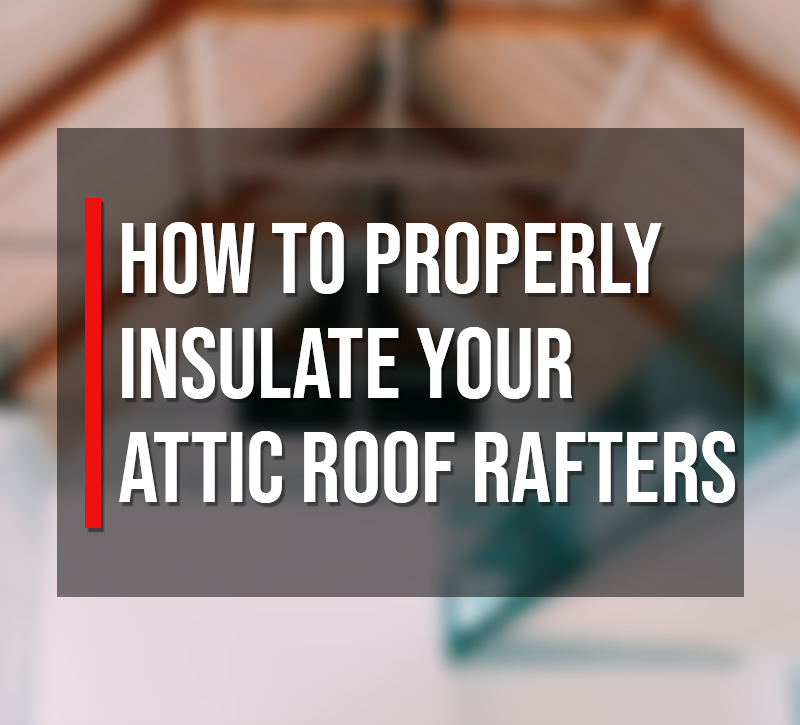
How to Properly Insulate Your Attic Roof Rafters
 Proper insulation of your attic roof rafters is essential for preventing air leakage and keeping your home warm in the winter and cool in the summer. If you’re looking for a DIY project that you can complete on your own, this is a great way to save money and increase the energy efficiency of your home. Let’s look at how you can properly insulate your attic roof rafters.
Proper insulation of your attic roof rafters is essential for preventing air leakage and keeping your home warm in the winter and cool in the summer. If you’re looking for a DIY project that you can complete on your own, this is a great way to save money and increase the energy efficiency of your home. Let’s look at how you can properly insulate your attic roof rafters.
Measure Your Attic Space
The first step in insulating your attic roof rafters is to measure the space you have available. Take into account any obstacles such as vents, pipes, or ductwork that could affect the type of insulation material you choose. Also, consider what type of climate you live in and what R-value (measurement of resistance to heat flow) would be most suitable for your needs.
Choose Your Insulation Material
Once you’ve measured the space, it’s time to choose an insulation material based on what kind of climate you live in as well as your specific needs. Fiberglass insulation rolls are one of the most popular options due to their affordability and ease of installation. However, other materials like foam boards or spray foam insulation may be more suitable for certain climates or budgets.
Preparing the Space
Before installing any insulation material, it’s important to ensure that there are no leaks or drafts from outside sources that could reduce its effectiveness. To do this, seal any gaps around windows, doors, and other openings with caulk or weatherstripping before beginning installation. It is also important to make sure that all plumbing fixtures are properly sealed before installation as well. Once these steps have been completed, it is safe to start laying down insulation material throughout the attic space until all rafters are covered.
Insulating attic rafters is an effective way to reduce energy consumption and improve thermal comfort. It can be achieved by installing slabs and rolls between the attic rafters, allowing for larger attic space while providing optimal performance. In addition to this, insulation can be placed both under and over the attic rafters, with battens used to provide further space for under-the-rafter insulation. More specifically, this may involve a few centimetres of material that improves sound levels or fire resistance as required by regulations. For additional thermal properties, high-density boards are mounted onto the roof construction with over-the-attic rafter insulation in order to keep attic space large enough for residential usage. To ensure proper insulation of attic spaces it is important to consider insulating roof rafters fully in order to maximize performance benefits.
Insulating roof rafters is a great way to increase energy efficiency while saving money on heating and cooling costs year-round. With careful planning and some basic tools and materials, anyone with a bit of DIY experience can successfully complete this project in just a few hours! Following these steps will ensure that proper insulation techniques are used so that you can get the maximum benefit from this investment in both comfort and cost savings for years to come!
 Rated Excellent
Rated Excellent